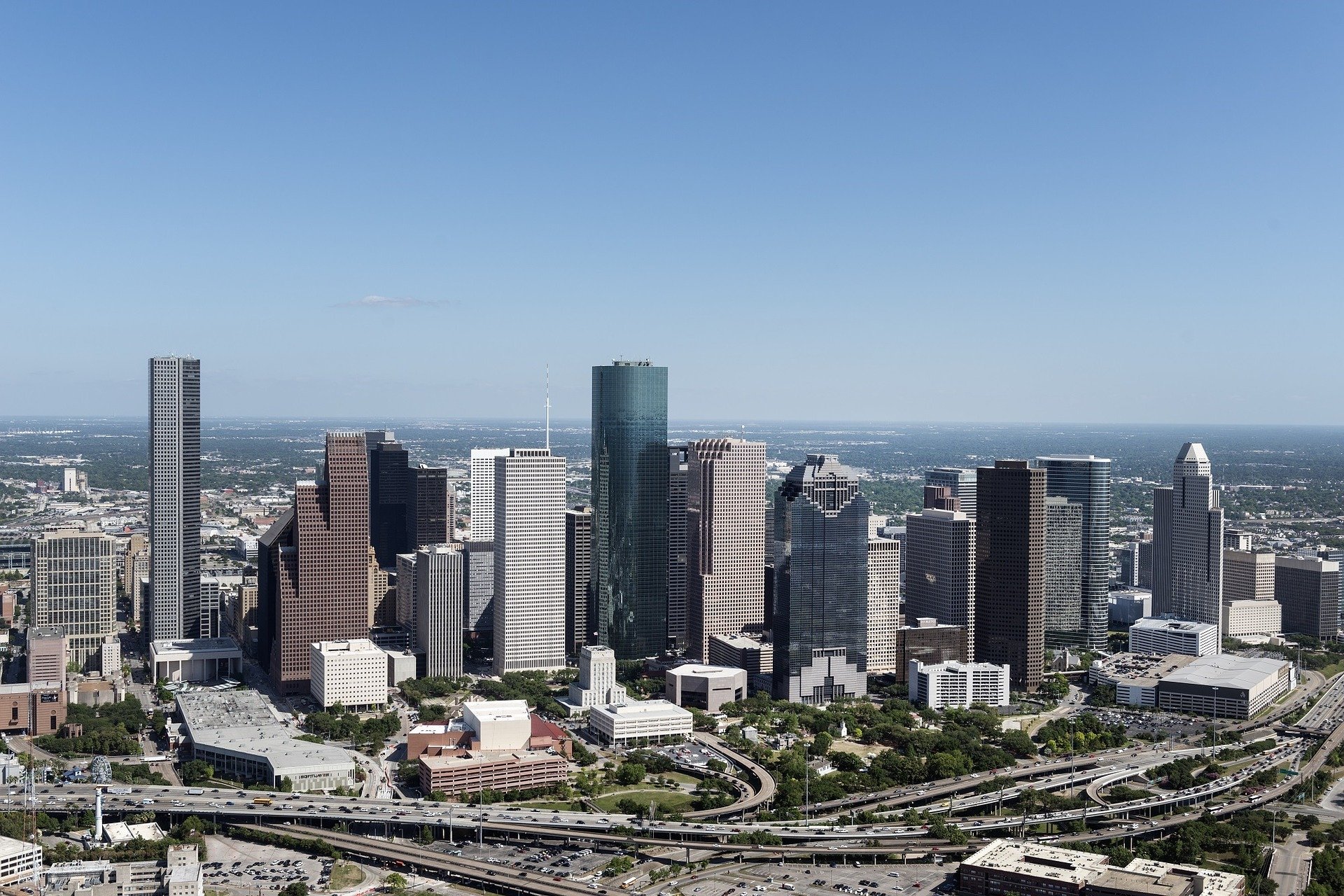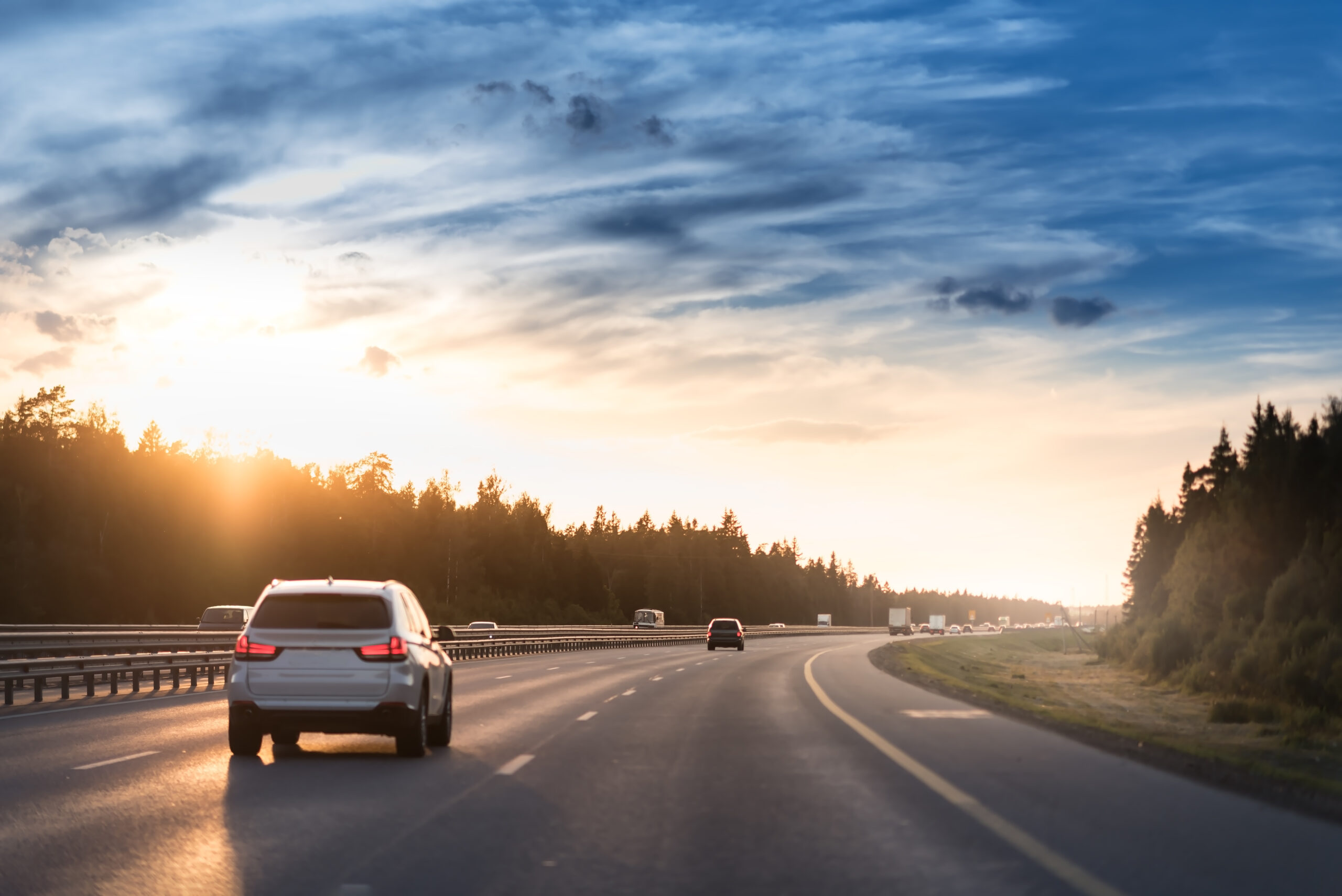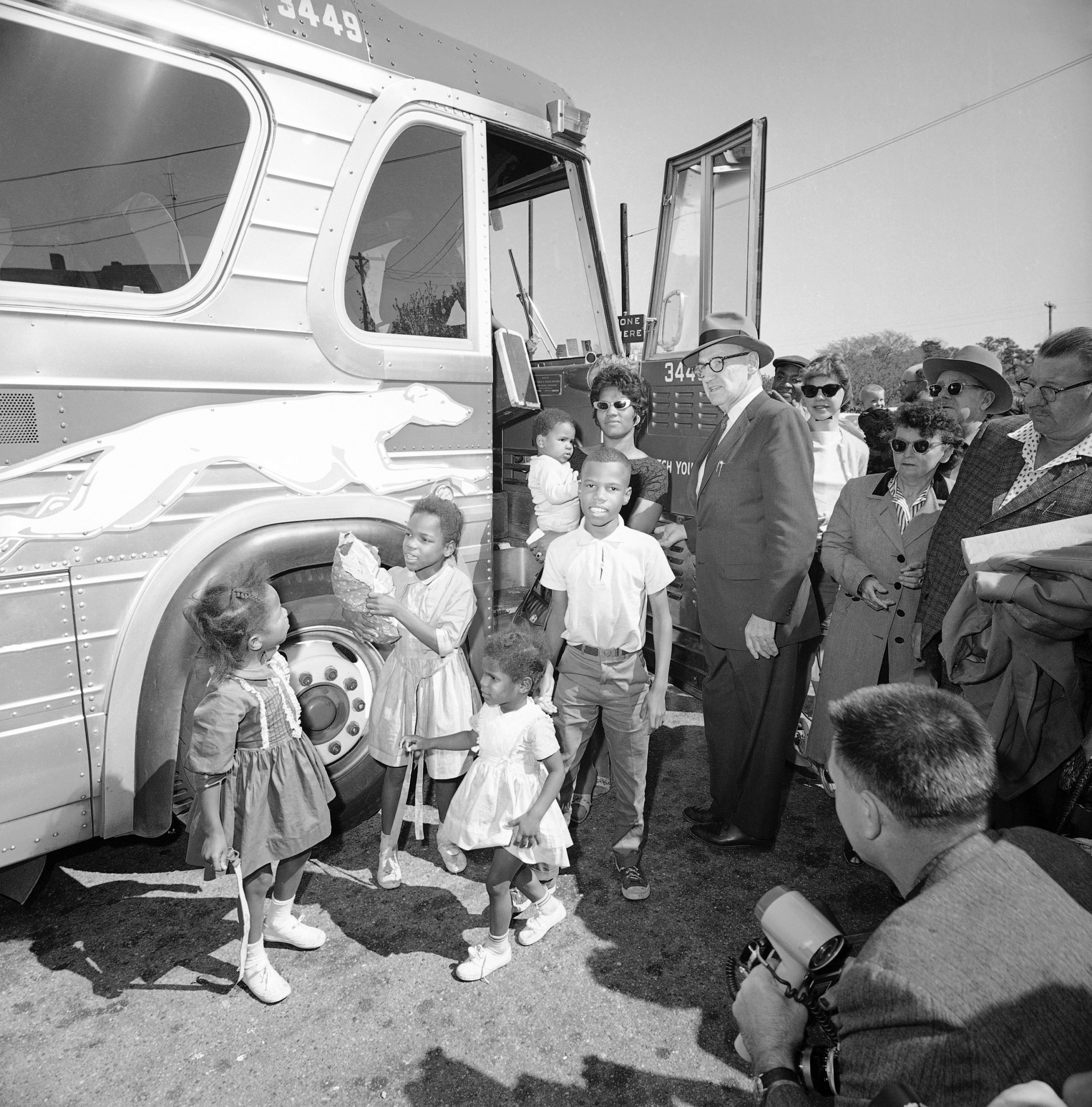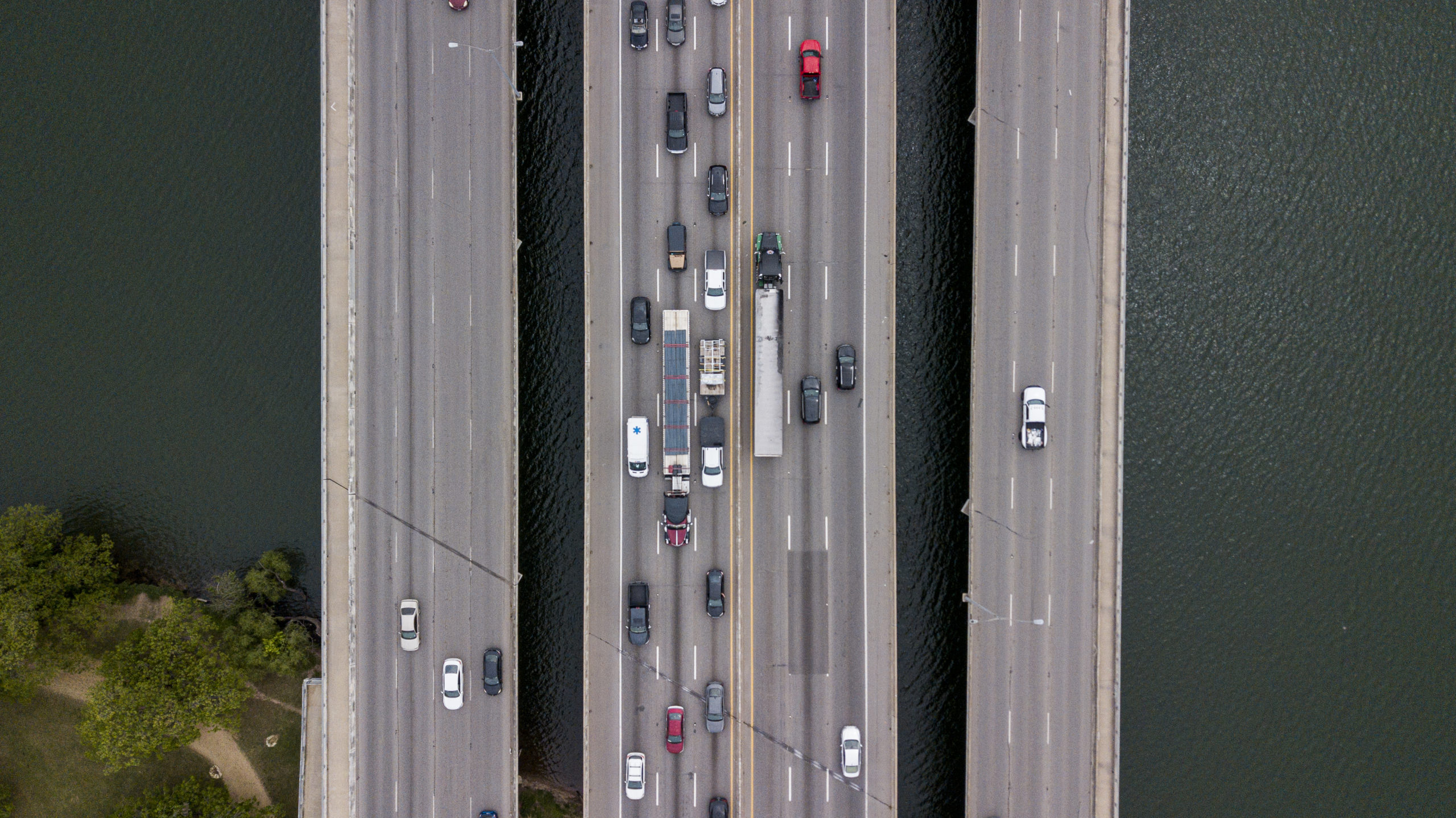
Houston, Let People Walk
When forced to choose between cars and people, the fourth-largest city in the United States has a long history of siding with the former.
A version of this story ran in the September / October 2020 issue.
Above: Streets are wide. Parking is plentiful. Freeways go everywhere.
This spring, in the early days of the COVID-19 lockdown, my family joined thousands of other Houstonians in taking advantage of the car-free streets to go for long bike rides. It was surreal. Streets in Houston are for cars, not people, and yet there they were: People on brand-new bicycles, seeing the city up close for the first time. Kids rode bikes in packs like characters from The Sandlot. Families, like mine, luxuriated with toddlers on once-dangerous streets. Bike rentals skyrocketed.
In cities across Texas, people were unable to gather in their usual spots—offices, malls, movie theaters—without risking disease and death. Large swaths of the state began to suffer from a collective case of cabin fever. In response, Austin, Dallas, and San Antonio closed streets to cars so that people could walk, bike, and safely social distance outdoors.
Houston, meanwhile, failed to formalize its car-free streetscape beyond a single pilot project. I learned that lesson firsthand as we rode around Rice University one Sunday morning at the end of May, when a car nearly hit us while speeding on the way to a red light. The natural order had returned to Houston. The streets belonged, once again, to cars.
I once heard someone say that if aliens were to ever visit Houston, they would surmise that we had one law above all else—the cars must be happy.
When forced to choose between cars and people, the fourth-largest city in the United States has a long history of siding with the former. Houston infamously doesn’t have zoning, but that laissez-faire attitude goes out the window when it comes to regulations and laws that promote driving ahead of any other form of transportation. Buildings must be a certain distance away from the street, inhibiting walkability. Parking minimums mandate that businesses provide a massive number of spots for cars, forcing developers to make every building look like a feeder road strip center. Businesses have to receive special permission to put shade over sidewalks—a necessity for the six-month season we call summer—because the awnings illegally trespass into the public right of way. And, with some exceptions, sidewalk maintenance itself is the responsibility of private developers instead of public officials.
Streets are wide. Parking is plentiful. Freeways go everywhere.
I once heard someone say that if aliens were to ever visit Houston, they would surmise that we had one law above all else—the cars must be happy.
The people, on the other hand, are less cherished. In 2018, an investigation by the Houston Chronicle found the metro area’s streets to be the deadliest in the nation for drivers, passengers, and pedestrians. According to the Chronicle, 640 people die on Houston-area roads each year, and 2,850 more are seriously injured. Those deaths, wrote the series’ authors, “are met largely with silence.”
People on foot are particularly vulnerable. While drivers are much more likely than pedestrians to be involved in a car crash, pedestrians die in similar numbers.
To its credit, the city heeded the exposé and adopted a Vision Zero plan to fix particularly dangerous roads. It started to install crosswalks and rebuild intersections. But progress comes in fits and starts. A city-led program to help build and repair sidewalks ended up helping a total of two residents. The city continues to support a $7.5 billion plan to expand an interstate through residential neighborhoods.
Although Houston has struggled to build a cityscape for people outside cars, it has at least started to tear down the regulations that make safe, walkable areas a near impossibility. Last year, Houston City Council eliminated parking mandates in the dense Midtown and EaDo neighborhoods. And in August, it unanimously approved the Walkable Places and Transit-Oriented Development ordinances, which will encourage pedestrian-friendly designs in areas near transit stops and in certain neighborhoods.
I’ve been thinking about Houston’s streets during COVID-19, and not just because I’ve been desperate to get out of my house. Over the past several months, Texas politicians, including Lieutenant Governor Dan Patrick, have tried to argue that we should all learn to live with COVID-19—or, more accurately, die with it. The argument sounds familiar to Houstonians who have demanded the city consider people’s safety ahead of all those happy cars. The economic risk of ditching the status quo is too high, skeptics say. Other places may have enacted policies that saved lives, they say, but we’re different.
But for a few weeks this spring, I saw how Houston could be a city for people beyond their cars. The city should not let the vision fade as life finds its new normal.
Read more from the Observer:
-
Claiming Major Superfund ‘Success,’ Trump EPA Focused on Completing Cleanups, Not Climate Planning: As work stalled on hardening Superfund sites against climate-related weather extremes, budget cuts continued and a backlog of sites awaiting cleanup ballooned.
-
Short Story Finalist: ‘Solitary’: “There is no justice in being morally just. Not here.”
-
Democrats Seek to Undo San Antonio Senate Slip-up: Or, Roland’s Revenge.


